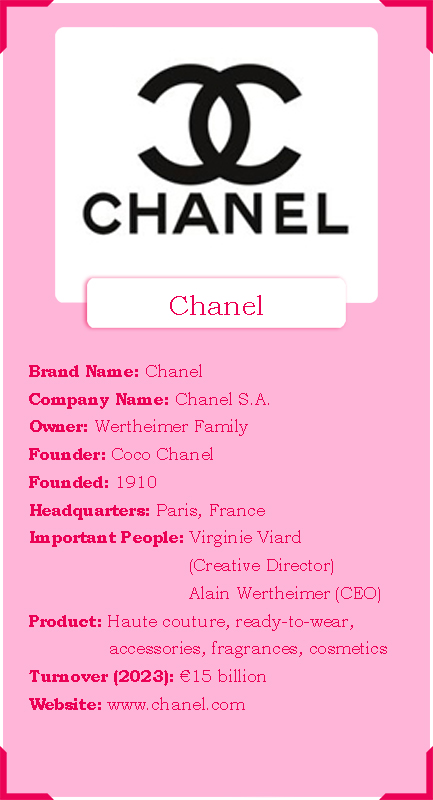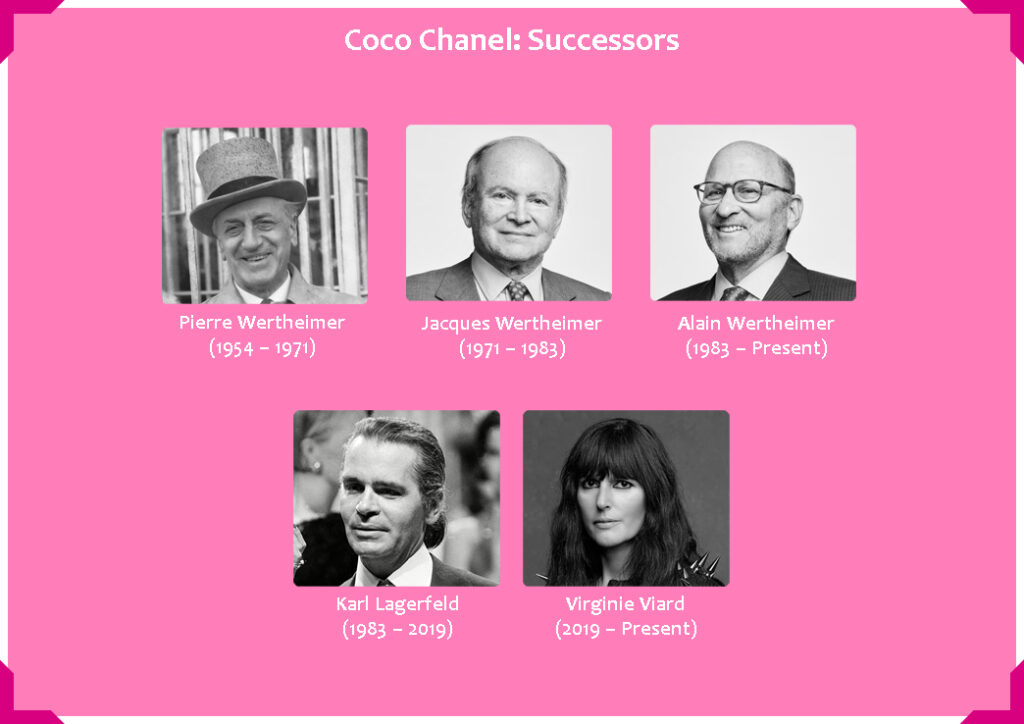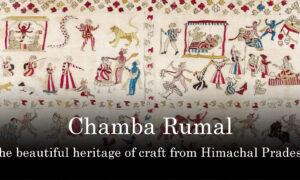Introduction to Coco Chanel

Gabrielle “Coco” Chanel is one of the most influential fashion designers in history, celebrated for her revolutionary contributions to women’s fashion. She liberated women from the constraints of corseted silhouettes and introduced a modern, chic style that emphasized comfort, simplicity, and elegance. Chanel’s designs transformed fashion norms and set new standards for sophistication and practicality. Known for saying, “Fashion fades, only style remains the same,” Chanel believed in timeless style over fleeting trends. Her creations, such as the iconic little black dress, tweed suits, and the Chanel No. 5 perfume, have become symbols of enduring elegance and remain relevant even decades after her passing.
Early Life and Background
Gabrielle Bonheur Chanel was born on August 19, 1883, in Saumur, France, to Jeanne Devolle and Albert Chanel. Raised in poverty, Chanel’s early life was marred by hardship. Her mother’s death when Chanel was just 12 years old led to her father abandoning the family. Chanel and her sisters were sent to the Aubazine orphanage, where she was introduced to the basics of sewing—a skill that would later shape her career. The strict convent environment, with its somber colors and austere lifestyle, had a lasting impact on Chanel’s aesthetic, inspiring her love for black and white palettes and minimalist design.
After leaving the orphanage at 18, Chanel found work as a seamstress and later as a cabaret singer in Moulins and Vichy. Her singing career was not particularly successful, but it was here that she acquired the nickname “Coco,” a name that became synonymous with style and elegance.
Career Beginnings
Coco Chanel’s foray into fashion began in the early 1910s when she opened her first millinery shop, Chanel Modes, at 21 Rue Cambon in Paris, with the financial support of her wealthy lover, Étienne Balsan. She quickly gained a reputation for her simple, yet stylish hats that stood in contrast to the extravagant designs of the era.
Encouraged by the success of her hats, Chanel expanded her business and opened a boutique in Deauville in 1913, followed by another in Biarritz in 1915. Here, she introduced her first clothing lines, characterized by simple designs using jersey fabric—a material traditionally used for men’s undergarments. Chanel’s use of jersey was groundbreaking, as it offered women comfort and freedom of movement, contrasting sharply with the restrictive garments of the time. Her early collections laid the foundation for what would become her signature style: casual elegance.
Rise to Fame

Chanel’s rise to fame began after World War I, when women were seeking practical and less formal clothing. In 1919, she established her couture house at 31 Rue Cambon in Paris. The success of her clothing lines enabled her to revolutionize women’s fashion with her avant-garde designs.
One of her most notable creations during this period was the Chanel Suit, introduced in the 1920s. The suit, with its boxy jacket, fitted skirt, and braid-trimmed edges, was designed for comfort and sophistication. Another defining moment came in 1926 when she introduced the little black dress in Vogue. The dress was described as “a sort of uniform for all women of taste,” and its simplicity and versatility made it an instant classic. Her impact on the industry was recognized by her contemporaries and fashion editors alike, and she became the go-to designer for women of high society and Hollywood stars.
Signature Style and Innovations
Chanel’s signature style was defined by its emphasis on simplicity, elegance, and practicality. She rejected the opulent, restrictive designs of the Belle Époque era, opting instead for clean lines and functional garments that suited the modern woman’s lifestyle. Her designs incorporated elements of menswear, reflecting her belief that women’s clothing should be comfortable and unrestrictive.
Chanel introduced several innovations that have since become staples of women’s fashion. The little black dress, as mentioned, is one of her most enduring legacies, redefining black as a color that could be worn beyond mourning and symbolizing chic sophistication. Her use of tweed fabric in her suits, jersey for dresses, and costume jewelry as accessories became hallmarks of her style. The creation of Chanel No. 5 in 1921, the first perfume to blend multiple notes and bear a designer’s name, was another pioneering achievement that revolutionized the fragrance industry.
Famous Quotes
Coco Chanel was well known for having strong opinions. Her quips have become guidelines for many a future designers. Here are some famous quotes by her that reflect her unique perspective on style, fashion, and life:
- “The best things in life are free. The second-best are very expensive.”
- “Fashion changes, but style endures.”
- “A girl should be two things: who and what she wants.”
- “Simplicity is the keynote of all true elegance.”
- “Dress shabbily and they remember the dress; dress impeccably and they remember the woman.”
- “Beauty begins the moment you decide to be yourself.”
- “Luxury must be comfortable, otherwise it is not luxury.”
- “In order to be irreplaceable, one must always be different.”
- “I don’t do fashion, I am fashion.”
- “You can be gorgeous at thirty, charming at forty, and irresistible for the rest of your life.”
These quotes capture the designer’s philosophy and her influence on the fashion industry.
Impact on the Fashion Industry
Coco Chanel’s influence on fashion was unparalleled. She redefined how women dressed, making elegance attainable and functional. Her designs blurred the lines between casual and formal wear, introducing clothing that was versatile and timeless. Her work influenced countless designers, including Yves Saint Laurent, Karl Lagerfeld, and even modern designers like Phoebe Philo and Miuccia Prada, who adopted her minimalist approach and focus on functionality.
Chanel’s contributions went beyond clothing and perfume; she also played a crucial role in popularizing costume jewelry. Her use of faux pearls and statement pieces redefined jewelry as an accessory that could be mixed with both casual and formal attire, democratizing fashion and making it accessible to a broader audience.
Notable Collaborations and Projects
The designer’s collaborations were as impactful as her designs. In the 1920s, she worked with perfumer Ernest Beaux to create Chanel No. 5, which remains one of the best-selling perfumes in the world to this day. She also collaborated with jeweler Robert Goossens, who crafted bold and imaginative pieces that complemented her minimalist outfits.
In addition to her fashion house, she also collaborated with Hollywood, designing costumes for stars like Marlene Dietrich and Gloria Swanson. She designed the wardrobes for films like Tonight or Never (1931) and The Greeks Had a Word for Them (1932), bringing her aesthetic to the silver screen.
Personal Life and Public Persona
Coco Chanel’s personal life was as complex as her designs. Known for her sharp wit and strong opinions, she cultivated an air of mystery around herself. Her love affairs with high-profile men such as the Duke of Westminster and composer Igor Stravinsky were widely publicized, adding to her mystique.
During World War II, Chanel’s relationship with a German officer, Hans Günther von Dincklage, led to accusations of collaboration with the Nazis. This period remains controversial and marred her reputation. She had to fled to Switzerland after the war but made a triumphant return to Paris in 1954 at the age of 71, relaunching her fashion house and proving her enduring relevance.
Legacy and Continuing Influence
Coco Chanel’s legacy is a testament to her vision and resilience. Even after her death in 1971, her fashion house continued to thrive. Karl Lagerfeld’s appointment as creative director in 1983 breathed new life into the brand, reinterpreting Chanel’s classic designs with a modern twist. Under Lagerfeld’s leadership, Chanel became one of the most successful and influential fashion houses globally.
Today, Chanel is led by Virginie Viard, who continues to honor the brand’s heritage while introducing fresh perspectives. Chanel’s influence on fashion is seen in its consistent revenue growth, with annual revenues exceeding $15 billion in 2023. The brand’s iconic pieces, such as the quilted handbag, two-tone shoes, and tweed jackets, are as coveted now as they were in Chanel’s time.
Successors of the House of Chanel
Pierre Wertheimer (1954 – 1971): Pierre Wertheimer, co-founder of the brand along with Coco Chanel, was instrumental in the business operations of the company. After her brief departure from the fashion world during World War II, Wertheimer played a critical role in maintaining the brand’s production, especially with the successful distribution of Chanel No. 5. In 1954, when Chanel returned to relaunch her couture line, Wertheimer financially backed her and continued to manage the business aspects of the house until her death in 1971. His steadfast commitment laid the foundation for the brand’s long-term stability and growth.
Jacques Wertheimer (1971 – 1983): After Pierre Wertheimer’s death in 1965, his son, Jacques Wertheimer, took over the leadership of Chanel in 1971. Unlike his father, Jacques had a more conservative approach to managing the brand, and during his tenure, Chanel’s influence and appeal began to wane. Although he maintained the house’s reputation for luxury and exclusivity, Jacques did not innovate or invest in expanding Chanel’s creative vision, leading to a period of stagnation. His son, Alain Wertheimer, recognized this challenge and sought to revitalize the brand by bringing in a new, dynamic creative force.
Alain Wertheimer (1983 – Present): Alain Wertheimer took control of Chanel in 1974 and made the pivotal decision to hire Karl Lagerfeld as the creative director in 1983. This bold move reenergized the brand and restored its position as a leader in high fashion. Alain’s business acumen, combined with Lagerfeld’s creative genius, helped Chanel become a multi-billion-dollar global powerhouse. Under his leadership, the business diversified its product offerings, launched numerous successful campaigns, and solidified its status as a symbol of luxury and timeless style. Alain Wertheimer remains actively involved in Chanel’s strategic direction, ensuring its continued legacy of excellence.
Karl Lagerfeld (1983 – 2019): Karl Lagerfeld, often hailed as a fashion genius, took over as creative director of Chanel in 1983. Lagerfeld’s tenure was defined by his ability to honor Coco Chanel’s legacy while introducing fresh, modern elements that kept the brand relevant for new generations. He famously revived the iconic Chanel suit, reimagined classic elements like the interlocking C logo, and made the house a trendsetter once again. His theatrical runway shows, blending high fashion with storytelling, became the hallmark of his presentations. Lagerfeld’s vision and leadership were integral to the brand’s resurgence and success, making him synonymous with the brand until his passing in 2019.
Virginie Viard (2019 – Present): Virginie Viard, who had worked alongside Karl Lagerfeld for over three decades, became the brand’s creative director following his death in 2019. Her intimate knowledge of the house’s heritage and her deep understanding of Lagerfeld’s vision made her a natural successor. Viard’s collections reflect a softer, more feminine take on Chanel’s legacy, emphasizing wearable luxury and artisanal craftsmanship. While staying true to the core codes of the house, she has also introduced subtle innovations, ensuring that the brand remains contemporary and connected to the modern woman’s lifestyle. Under her guidance, the house of Chanel continues to honor its past while evolving to embrace the future.

Conclusion
The legacy of the House of Chanel is a testament to the extraordinary vision, resilience, and creativity of its founder, Coco Chanel, and the remarkable talents of those who have succeeded her. Each of the houses’s successors—Pierre Wertheimer, Jacques Wertheimer, Alain Wertheimer, Karl Lagerfeld, and Virginie Viard—has contributed uniquely to the brand’s evolution, ensuring its place as a pillar of elegance and innovation in the fashion world.
Coco Chanel revolutionized the fashion landscape by liberating women from restrictive clothing and offering a modern, sophisticated alternative. Her emphasis on simplicity, comfort, and elegance became the DNA of the brand. Her visionary approach laid the groundwork for a company that would not just withstand the test of time but redefine what it means to be timeless. Pierre Wertheimer, her earliest business partner, ensured the brand’s financial stability and expanded its international reach, while his son, Jacques, maintained the house’s exclusivity during a period of transition.
Alain Wertheimer’s bold decision to appoint Karl Lagerfeld in 1983 marked a turning point in the house’s history. Lagerfeld’s imaginative and daring designs honored Chanel’s legacy while catapulting the brand into the modern era. His charismatic presence, theatrical runway shows, and ability to blend tradition with innovation revitalized the brand and made it a dominant force in luxury fashion for over three decades. Virginie Viard’s appointment in 2019, after Lagerfeld’s passing, introduced a new chapter of subtle refinement and delicate modernity, keeping Chanel at the forefront of fashion.
What makes Chanel truly exceptional is its seamless blend of heritage and contemporary relevance. Every design, whether a tweed suit or a quilted handbag, carries the story of a woman who dared to defy convention and shaped fashion for future generations. Even today, her aesthetic, which embraces femininity and strength, continues to inspire designers and influence global trends. As Coco Chanel herself once said, “I don’t do fashion. I am fashion.” This declaration speaks to her enduring influence—not just on clothing, but on the very definition of style.
Today, Chanel remains one of the most coveted luxury brands in the world, with annual revenues surpassing €15 billion in 2023. The brand’s iconic pieces—such as the Chanel No. 5 perfume, the little black dress, and the classic flap bag—are considered cultural symbols and status symbols alike. Whether through Karl Lagerfeld’s reinterpretation of the house codes or Virginie Viard’s delicate evolution of the brand, the brand continues to embody elegance, sophistication, and timelessness.
The house’s influence goes beyond just fashion. Chanel’s impact on art, cinema, and lifestyle reflects its versatility and ability to adapt to cultural changes while maintaining its essence. Each collection pays homage to its rich history while embracing the future, ensuring that the house remains relevant and revered in an ever-evolving industry. Her story is not just one of a brand, but of a spirit that champions innovation, freedom, and style. As the brand continues to grow and evolve, the ethos of this house remains at its core, reminding us that true style never fades.
Exploring the designer’s collections is akin to witnessing the evolution of fashion itself—each piece a reflection of changing times and shifting tastes. Yet, at its heart, Chanel’s enduring allure lies in its commitment to authentic elegance and a relentless pursuit of perfection. It’s no wonder that Chanel is more than a fashion house; it is an institution that has come to define what it means to be truly iconic. As the world of fashion continues to transform, her legacy will undoubtedly remain, not just as a brand but as a beacon of style, a tribute to a visionary woman who dared to reshape fashion’s narrative forever.
Do let me know if I have missed any important aspect of this great visionary designer.





























Pingback: the extraordinary Russian textiles Kaitag in 5 mins
Pingback: Definite History And Evolution Of Evening Gowns In 5 Mins
Pingback: Power Of Fashion Marketing In 4 Successful Campaigns
Pingback: Fashion Marketing In 4 Successful Case Studies
Pingback: The 10 Most Prestigious Fashion Competitions In The World
Pingback: 8 Most Popular Fashion Feuds In History
Pingback: The Top 10 Fashion Conglomerates Of The World